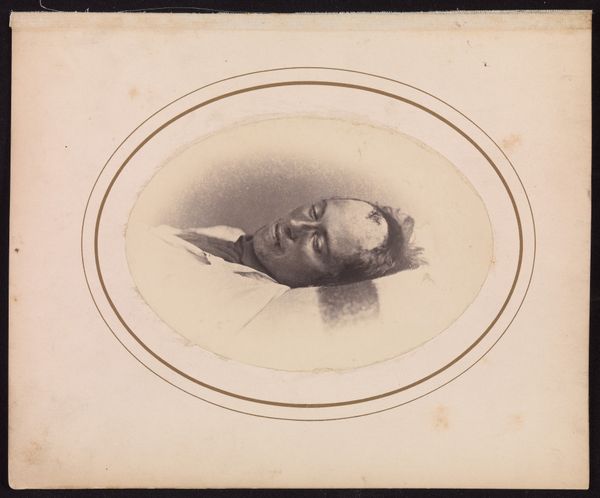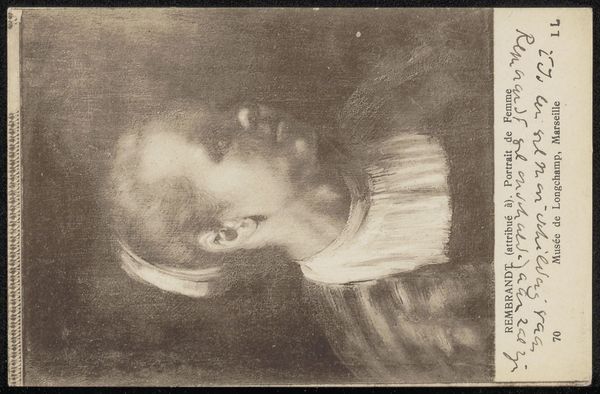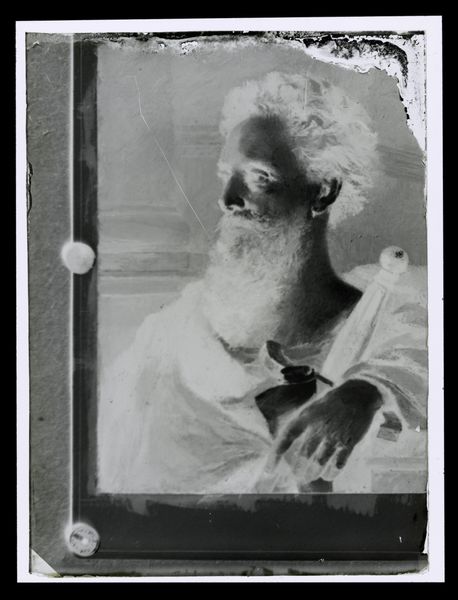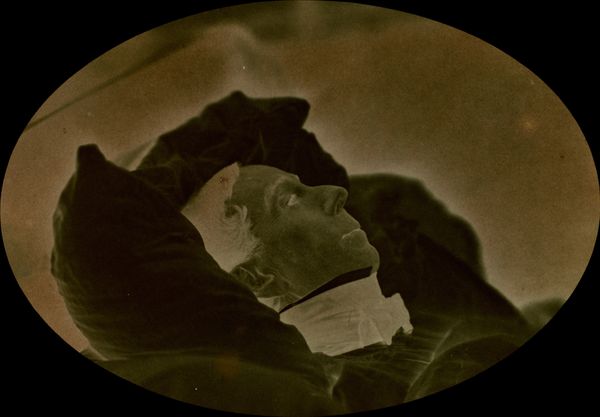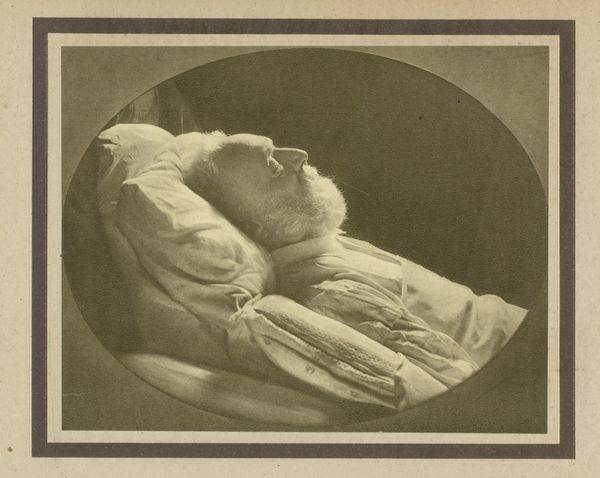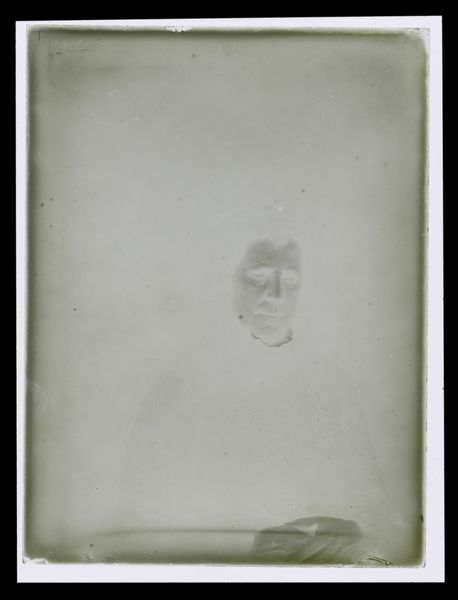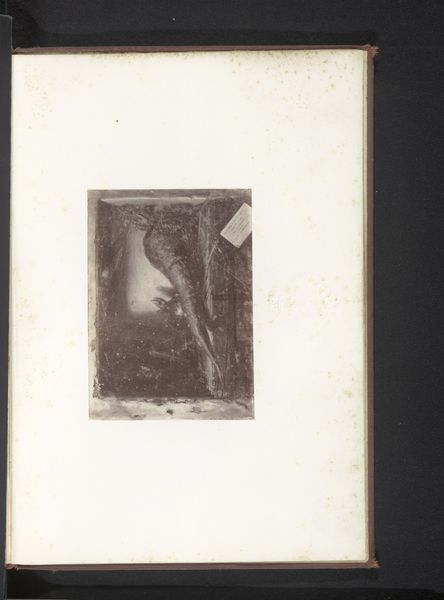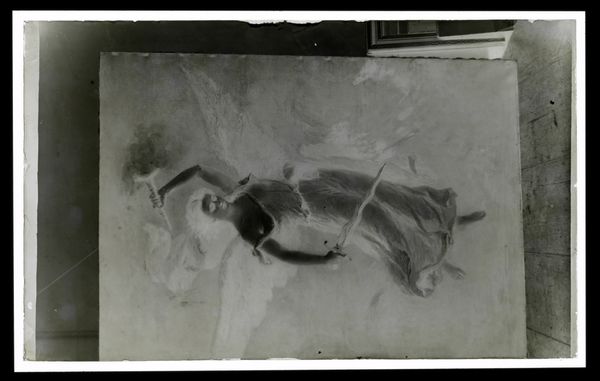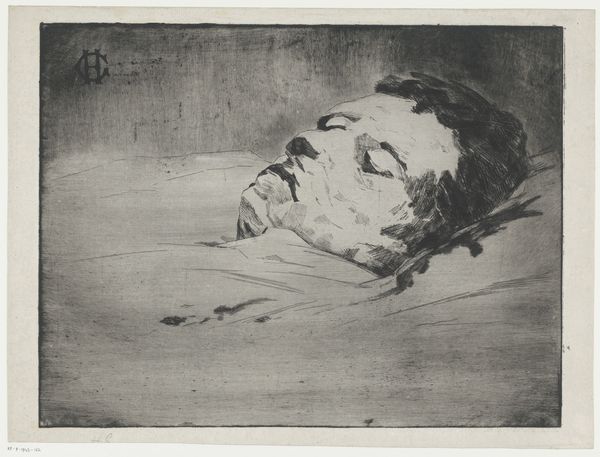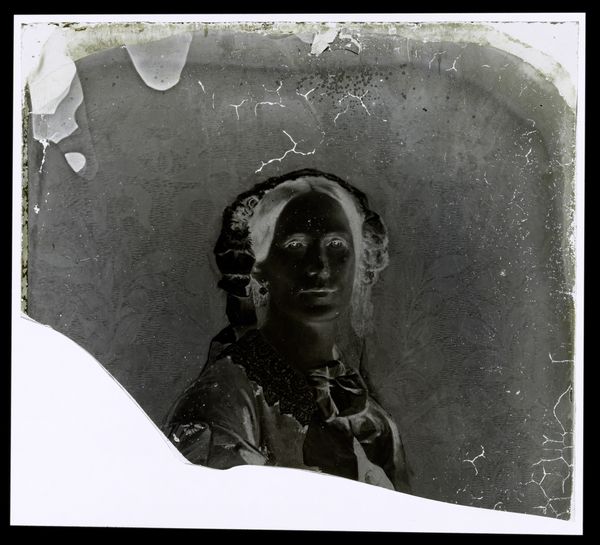
Fotoreproductie van een getekend portret van een onbekende vrouw, waarschijnlijk op het sterfbed c. 1865 - 1900
0:00
0:00
photography
#
portrait
#
photography
#
realism
Dimensions: height 130 mm, width 230 mm
Copyright: Rijks Museum: Open Domain
Curator: My first impression is one of unsettling calm. There's a stillness, a ghostly pallor, almost dreamlike. Editor: Indeed. This is a photogravure reproduction of a drawn portrait dating from around 1865 to 1900, of a woman, likely deceased. The identification remains unknown, however. The reality of mortality and how photography memorializes such moments speaks to wider societal considerations. Curator: Absolutely. I immediately think of the laborious process, the careful rendering of detail by the original artist and then the photographic reinterpretation and subsequent photogravure production, layering multiple skillsets. What does it mean for value when we reproduce death? Is this about access and democratizing images of mourning? Editor: It's striking to consider how death rituals intersected with emerging photographic technologies. Prior to widespread access, such images offered a tangible way for those close to the departed to grieve. Curator: Note, too, how the pose itself, the reclining figure, draws heavily on artistic traditions, from sculpture to painting. Yet, photography here offers something distinctly different - an unsettling immediacy, even within this indirect photogravure process. What did the average person consume, see? This gets at it. Editor: These death portraits raise profound questions about cultural attitudes towards death and mourning. They can give us insight into the conventions, values, and class distinctions embedded within nineteenth-century visual culture. This, too, highlights a crucial intersection between art and social history. Curator: This photographic object has transformed materially with age; the decomposition of the physical support acts in concert with the photograph's theme. Together they invite conversations about labor, loss, and remembrance within very tangible objects, too, even in the digital era. Editor: The enduring fascination with these images speaks volumes about our human need to confront mortality and the complex roles of visual representation. Curator: Ultimately, it reminds me of the raw human need to connect with the ephemeral, to memorialize not just through feeling but through tangible means accessible to the many not the few.
Comments
No comments
Be the first to comment and join the conversation on the ultimate creative platform.


